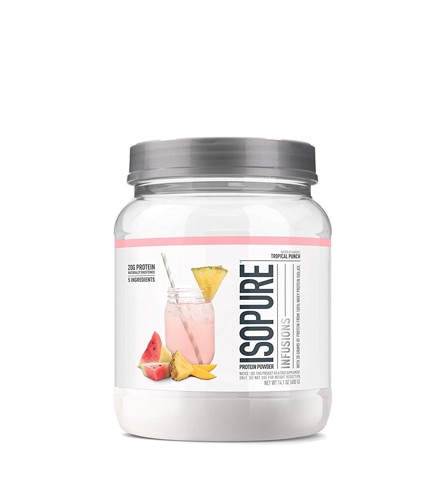Even if you’ve been inactive throughout your life, becoming fit after 40 can pay off.
Based on data from more than 315,000 Americans, a study published in 2019 found that becoming physically active from ages 40 to 61 following a sedentary adulthood was tied to at least a 32 percent lower risk of death.
Therefore, getting in shape and staying in shape at age 40 and beyond can lead to a longer, better life. But that’s easier said than done, right?
So that you can walk the walk rather than just talking the talk, we’ve assembled the following 10 tips to pump up your after-40 fitness routine.
1. Assess your fitness.
Before running even one mile or lifting a single weight, visit with your health care provider or a fitness professional to gauge which exercise regimen will be best for your body type and your physical condition, says Nicolle Harwood-Nash, a fitness coach who writes for The Workout Digest website.
“There are countless ways you can move and use your body, and every method has its own benefits, downsides or peculiarities,” Harwood-Nash says.
2. Choose an activity that you like.
If you enjoy whatever form of exercise you’ve embraced, you’re more likely to stick with it, according to fitness and nutrition coach Allison Jackson.
“Zumba, spin, Orangetheory, Pilates, yoga — whatever you love, just do more of that,” she says.
3. Begin with low-impact exercise.
At the outset, don’t take on too much. This way, you can avoid injuries and overexertion — not to mention burnout.
Here are four of the Runtastic website’s suggestions for low-impact exercises to do when you’re launching a fitness routine:
- Walking
- Swimming
- Bodyweight training (rather than more strenuous weight training).
- Water aerobics.
4. Put weight behind strength training.
Personal trainer and nutritionist Jamie Hickey notes that sometimes in your 30s, your body stops working hard to maintain muscle mass. After that, you can lose 3 percent to 5 percent of your muscle mass per decade if you’re inactive, he says.
Hickey’s answer: strength training.
“No matter what age you are, if your body is put under stress, it will find a way to alleviate it,” he says. “If you’re lifting weights, your body wants to adapt to this problem. It does this by adding muscle mass to your frame to make you cope with this newfound stress.”
He warns that you won’t maintain lean muscle mass “if you just sit around all day being lazy, and this is especially true once you start to get older.”
Jackson says that strength training not only builds muscles, but it protects your joints and prevents injuries.
5. Keep in mind that it’s not all or nothing.
If you haven’t been exercising at all, undertaking just one exercise session a week will be beneficial, personal trainer Kathryn Alexander says. At three times a week, you’re racking up about 150 exercise sessions a year, which will yield even more progress. In other words, you don’t need to hit the gym every day to be fit.
“Give it your honest, best effort and then move on with your day. Allow yourself to improve. It’s OK not to jump in as an expert,” Alexander says.
6. Don’t compare yourself with fitness veterans.
Realize that you’re a rookie, and that at least initially you won’t be able to keep pace with folks who’ve been at this for years.
“Fitness training, like all skills, is a learned skill. The people who are good at it weren’t born with a dumbbell in their hand,” Alexander says.
7. Sidestep the aches and pains.
To be sure, you don’t want to leave a severely tweaked knee untreated. But everyday soreness shouldn’t sideline you.
“If your elbow hurts, that’s not a free pass to stay home,” Alexander says. “You can still do squats, lunges, and ab and trunk work.”
8. Kick up your metabolism.
Hickey says that in tandem with exercise, dietary discipline matters a great deal after age 40. That’s because your metabolism slows about 5 percent each decade once you’ve turned 40, he says.
To elevate your metabolism, Hickey recommends foods and beverages high in antioxidants. On the food side, these include blueberries, strawberries, dark chocolate, pecans, artichokes and goji berries. Among antioxidant-rich beverages are pomegranate juice, concord grape juice, blueberry juice, blackberry juice, green tea and rooibos tea.
9. Remember that food outweighs fitness.
All of that yoga, walking or swimming will be nullified if you’re not watching what you eat.
“You can’t out-train a bad diet,” Jackson says. “Eat a moderately high-protein, low-fat diet, and track your food. At the end of the day, it’s calories in versus calories out. Logging your food enables you to see how much or how little you’re eating.”
Jackson advises shunning diet pills, weight loss shakes and fad diets.
“Just eat healthy food in normal portions and occasionally have a slice of pizza or a beer,” she says. “Moderation and variety are your friends.”
Hickey says a well-balanced diet should include proper portions of protein, healthy fats and carbohydrates.
“If you don’t give your body the right type of nutrients that support muscle maintenance and growth, then your results will suffer,” Hickey says.
10. Stay hydrated.
Drinking plenty of water ensures you’re properly hydrated when you’re exercising and contributes to nutritional success.
According to the Mayo Clinic, men should consume about 15.5 cups of fluids (including water) each day. For women, the recommendation is about 11.5 cups of fluids each day.
“Your body is made up of 70 percent water,” Hickey says, “so imagine what your cells feel like when you’re dehydrated. Every function your body does on a daily basis requires water, and this includes building and maintaining lean muscle mass.”




